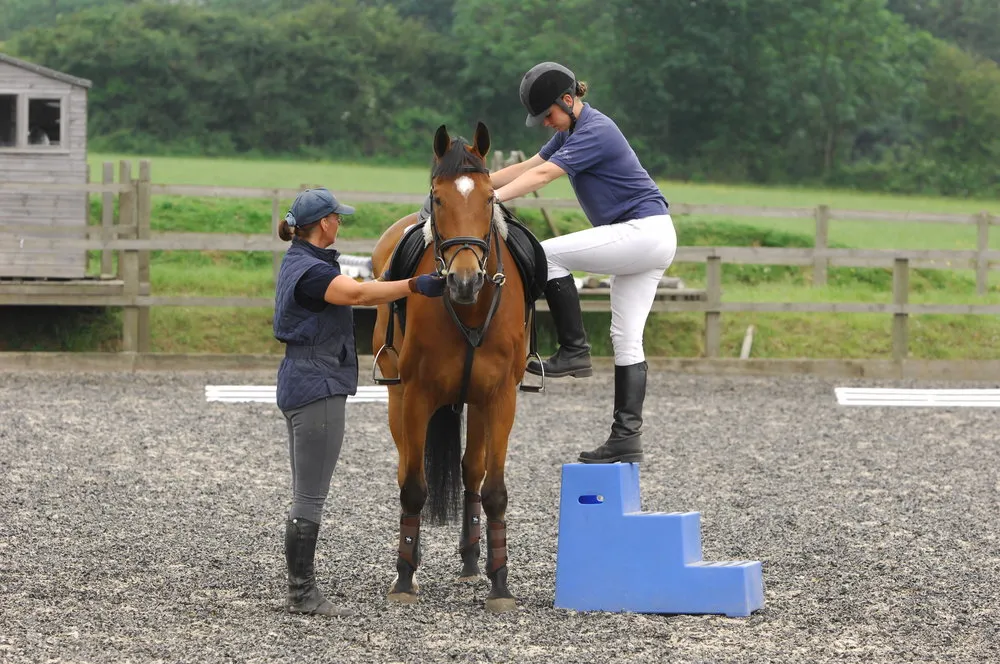- Mounting from the left is a historical tradition due to soldiers’ need to keep their sword side unobstructed.
- The safety reasons for mounting horses from the left side include ease for the rider and reduced risk of stress and injury to the horse.
- Consistency in mounting can lead to well-trained horses that are not startled by the mounting process.
- Modern equestrian practices continue to endorse left-side mounting to maintain uniformity in training and handling horses.
When it comes to horseback riding, every detail matters—not least of which is the seemingly simple act of mounting the horse. For centuries, riders have been taught to mount horses from the left side, a practice ingrained in equestrian tradition. But what lies behind this unwavering custom? Uncover the safety secrets and understand why mounting horses from the left side is essential for both the rider’s and the horse’s well-being.
>> READ MORE:
- What Side Do You Mount A Horse The Age-Old Question Answered
- Mastering the Art of Mounting Horses from the Right Side: A Step-by-Step Guide to Equestrian Excellence
The Historical Roots of Left-Side Mounting
Historically, mounting horses from the left side was a matter of practicality. Military riders would often have to carry a sword, which hung on their left side to be drawn with their right hand. Mounting from the left allowed these warriors to get on their horses without the sword’s scabbard getting in the way or causing injury. Additionally, many people tend to be right-hand dominant, making left-side mounting a more coordinated and therefore safer option.
Equestrian Training and Left-Side Mounting
Equestrian training has perpetuated the practice of left-side mounting to ensure that horses are familiar and comfortable with the process. Training a horse includes conditioning them to not be startled when a rider mounts, and consistency is key in this process. If every rider mounts from a different side, it can confuse and stress the horse, potentially causing dangerous situations.

The Impact on Horse Anatomy
Mounting horses from the left side is argued to be easier on the horse’s anatomy. This practice is rooted in the belief that since the heart is slightly left of center in a horse’s body, mounting from the left would be less alarming and more balanced for the horse. Moreover, it is important to ensure the horse’s spine and muscles do not suffer from unnecessary strain during mounting, which can be achieved through proper left-side techniques.
Reducing Rider Vulnerability
For the rider, the left-side mounting technique reduces vulnerability. When a rider prepares to mount, they face away from the horse and have one foot off the ground. In this position, the rider’s ability to react to potential dangers is reduced. If the horse were to start moving unexpectedly, the rider is safer on the left where they have more control and can respond quicker.
Maintaining Equestrian Uniformity
In modern riding schools and training facilities, the continuation of mounting from the left ensures a uniform approach that is easier for instructors to teach and for riders of all levels to learn and remember. Such uniformity is suitable not only for riders but also for horses that may be ridden by multiple individuals.
Safety Considerations for Mounting Horses
Regardless of which side you are mounting from, safety is paramount. To minimize risk, always approach the horse calmly to avoid spooking it, secure the reins before mounting, use a mounting block to avoid pulling on the horse’s back, and always wear appropriate riding gear, such as a helmet and boots.
Uncovering these safety secrets reveals that mounting horses from the left side is not just a matter of tradition; it is a crucial practice for the safety and well-being of both rider and horse. While times have changed and swords are no longer part of standard riding attire, the essence of this practice remains relevant. Through understanding these safety reasons for mounting horses from the left side, riders can ensure a harmonious and secure experience for themselves and their equine partners.



